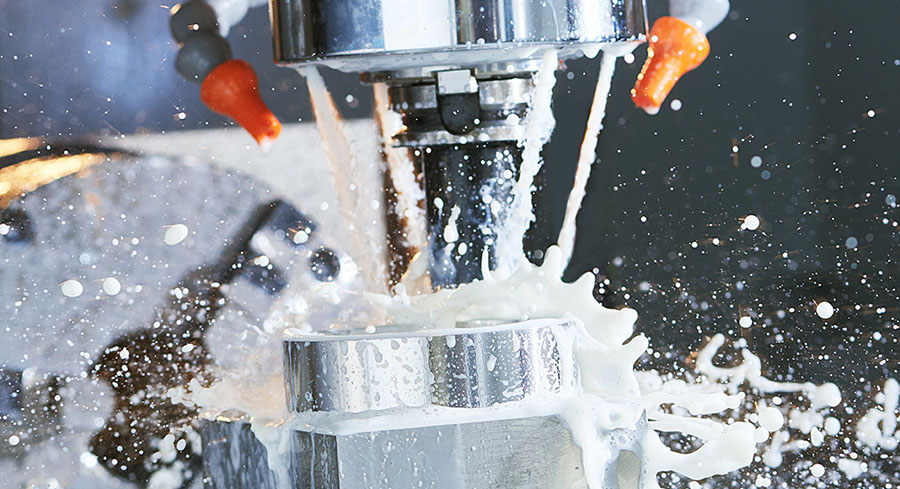Metal cutting is one of the most basic machining methods in the mechanical manufacturing industry. Metal cutting refers to the use of metal cutting tools on a metal cutting machine to remove excess metal from the surface of a workpiece, in order to achieve machining that meets predetermined requirements in terms of shape, dimensional accuracy, and surface quality.
Cutting speed is a very important parameter in the metal cutting process, which has a direct impact on cutting quality and processing efficiency. Choosing the correct cutting speed can improve machining efficiency, extend tool life, and ensure machining quality. This article will analyze the impact of cutting speed on metal cutting quality and provide some suggestions to optimize the selection of cutting speed.
The Influence Of Cutting Speed On Metal Cutting Quality
1. Tool Wear:
Cutting speed has a direct impact on tool wear. Higher cutting speeds can lead to increased tool wear due to higher temperatures generated at the cutting interface. This is especially relevant in high-speed machining where the tool may experience more rapid deterioration.
2. Heat Generation:
Cutting speed contributes significantly to the generation of heat during the machining process. Elevated temperatures can adversely affect the tool and workpiece material. Excessive heat can lead to tool softening, accelerated wear, and even thermal damage to the workpiece surface.
3. Surface Finish:
The cutting speed influences the quality of the machined surface. In general, higher cutting speeds tend to produce better surface finishes. However, there is an optimal range for cutting speed, and exceeding this range can result in poor surface quality due to factors like tool deflection and excessive heat.
4. Chip Formation:
Cutting speed affects the formation and evacuation of chips. Proper chip formation is crucial for achieving good surface finish and preventing issues like chip recutting. Different cutting speeds may lead to variations in chip morphology and evacuation efficiency.
5. Material Removal Rate:
Cutting speed is a significant factor in determining the material removal rate (MRR). Higher cutting speeds generally result in a higher MRR, which can be advantageous in situations where productivity is a primary concern. However, this needs to be balanced with considerations for tool life and surface finish.

6. Tool Forces and Power Consumption:
Cutting speed influences the cutting forces experienced by the tool and the power required for machining. Higher cutting speeds often lead to reduced cutting forces, which can be beneficial for minimizing tool deflection and energy consumption.
7. Material Hardening:
In certain materials, particularly some heat-treated steels, high cutting speeds can lead to material hardening. This is a phenomenon where the material becomes harder due to the rapid heating and cooling during cutting. It can impact tool life and machinability.
8. Vibrations and Chatter:
Cutting speed is a factor in the occurrence of vibrations and chatter during machining. Excessive cutting speed may contribute to unstable cutting conditions, leading to vibrations that can affect surface finish and tool life negatively.
9. Tool Engagement:
Cutting speed determines how frequently the cutting tool engages with the workpiece material. This engagement frequency can influence the formation of built-up edge (BUE), chip thickness, and the overall stability of the machining process.
Optimizing The Selection Of Cutting Speed
1. Material characteristics
Different metal materials have different cutting characteristics, and the appropriate cutting speed needs to be selected based on the characteristics of material hardness, toughness, and plasticity; Generally speaking, harder metal materials such as stainless steel and high-speed steel should have lower cutting speeds to reduce heat accumulation and tool wear; For softer metal materials such as aluminum alloy, copper, etc., the cutting speed can be appropriately increased.
2. Cutting depth and feed rate
The selection of cutting speed also needs to consider parameters such as cutting depth and feed rate. Generally speaking, when the cutting depth is large, a lower cutting speed should be selected to reduce heat accumulation and tool wear; When the cutting depth is small or the feed rate is large, the cutting speed can be appropriately increased.
3. Tool type and quality
Different types and qualities of cutting tools have different requirements for cutting speed. High speed steel tools are usually suitable for medium and low speed cutting, while hard alloy and ceramic tools are suitable for high-speed cutting; When selecting cutting tools, the appropriate cutting speed should be determined based on their wear resistance and heat resistance.
Cutting speed plays a crucial role in metal cutting and has a direct impact on cutting quality and process efficiency. Choosing the appropriate cutting speed can ensure the surface quality of machining, control cutting force, and extend tool life. Therefore, in practical applications, it is necessary to comprehensively consider factors such as the characteristics of metal materials, cutting depth and feed rate, as well as tool type and quality, in order to optimize the selection of cutting speed and achieve the best machining effect.



